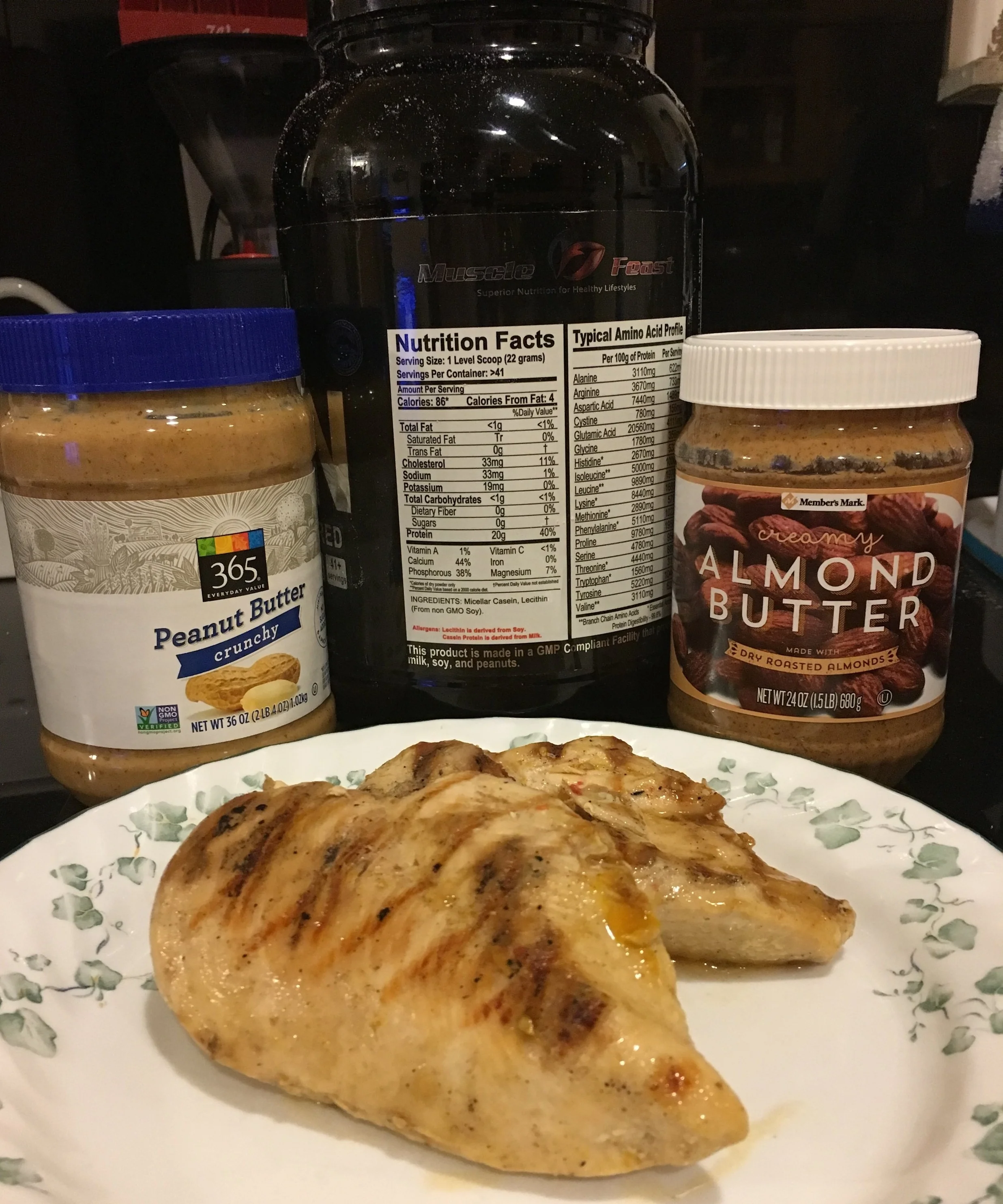Good Question: How much protein do I need?
Every day, one of my clients will ask how much protein do I need to eat?
Well, PROTEIN is an essential building block for our bones, muscles, cartilage, skin and blood. Our bodies need protein to make enzymes, hormones, maintain healthy blood pressure and more.. So, how do you determine the amount of protein needed in your diet?
The Recommended Daily Allowance of protein is 46 grams daily for women, and 56 grams daily for men. This is low comparatively speaking, since the RDA for protein can also be calculated based on body weight (the range including anywhere between 0.36- 0.8 grams of protein per pound of body weight)
I advise my clients anywhere between 0.5 to 0.75 grams of protein per pound of body weight, ranging up to 1 gram of protein per pound of body weight, depending on types of food, activity level, dietary preferences and calorie needs. So, if you are focused on losing weight, then look to eating more protein. Protein can help with weight control, ie. it is digested a lot slower than carbs, so we tend to stay fuller longer. And, our bodies burn more calories by digesting protein, compared to fat or carbs - translation - it takes more energy to break apart the protein to get to the amino acids. Simply stated, more work means more calories burned during digestion.
However, a high-protein diet may not be for everyone. People with gout, chronic kidney disease, frequent kidney stones, or other serious medical conditions should talk with their physicians before making any changes to their protein intake. EXAMPLE: For an average 150-pound person, this translates to 75-150 grams of protein daily - significantly more than the 46 to 56 grams recommended by the RDA.
Timing is also important!
Our bodies are more efficient when we're getting protein throughout the day, so depending on your total protein needs for the day, aim for 20-35 grams of protein per meal and snack. Make sure you include protein (at least 20 grams or more) within 30 minutes post-workout to generate muscle recovery and tissue repair.
Additionally, if you add protein to your diet, try to replace the sugary, high caloric foods with the protein calories.. For example, instead of two whole grain waffles, for example, have one, and add an egg to boost protein. Instead of half cup of oatmeal and a bowl of fruit (carbohydrate + carbohydrate), eat one carbohydrate and pair it with cottage cheese or two-egg white omelette.
More Protein doesn't mean More Meat..

"More protein" isn't an invitation to eat more meat, particularly processed meats. With the recent research showing a growing increase in heart disease and cancer, the American Institute for Cancer Research recommends that we steer clear of processed meats like bacon, sausage and deli meats, while limiting red meat to 18 ounces a week.
Instead, eat more protein-rich foods like fish, fresh (skinless) poultry and eggs plus include more non-meat protein options, like lentils, red beans and Greek yogurt. Although some plant-based proteins like nuts, seeds and grains may be very low in one or more of the nine amino acids, the objective should be to incorporate a variety of these plant-based foods throughout the day. For example: 3 ounces of grilled lean steak has 21 grams of protein which is about the same as one cup of lentils.
Protein powders can be an easy way to add more protein to our diet BUT, my motto has always been "There is NO substitute for REAL food." Protein powders are fast-satisfying and more convenient proteins.
Here's a summary of the calorie profile for approximately 20 grams worth of protein for 20 different foods:
- Egg whites (6 egg whites) - 102 calories
- Tilapia (3.3 ounces) - 93 calories
- Shrimp (3.3 ounces) - 100 calories
- Chicken (4 ounces) - 126 calories
- Protein powder (1 scoop whey, casein, plant-based) - 100-120 calories
- Greek yogurt (0 percent plain; 6.6 ounces) - 111 calories
- 95 percent lean ground beef (3.3 ounces) - 126 calories
- Salmon (3.3 ounces) - 133 calories
- Quest Protein Bar (1 bar) - 181 calories
- Amy's Quarter Pounder Veggie Burger (1 burger) - 210 calories
- Eggs (3 1/3 eggs) - 236 calories
- Lentils (1 1/8 cup, cooked) - 255 calories
- Red beans (1 1/4 cup, cooked) - 300 calories
- Milk (non-fat ; 2 cups) - 160 calories
- 70 percent lean ground beef (5 ounces) - 465 calories
- Peanut butter or almond butter (3 tablespoons) - 300 calories
- Amy's California Veggie Burger (1 burger) - 500 calories
- Almonds (2/3 cup) - 540 calories
- Quinoa (2.5 cups, cooked) - 555 calories
Many foods that are advertised as "protein rich" are surprisingly NOT. Here are 3 common protein mistakes and the better choice of counterparts:
Smoothie King's Muscle Punch Smoothie (20-ounce) has 360 calories, with just 5 grams of protein and 75 grams of sugar. A better protein choice is Smoothie King's Strawberry Gladiator Smoothie with 45 grams of protein, 180 calories, and 0 sugar (only if you ask not to include added fruits or fruit juice concentrates).
Quinoa is low in protein content. A cup of cooked quinoa has just 8 grams of protein for 222 calories. Whereas, Lentils have 18 grams of protein (and three times the fiber) for approximately the same calories.
Protein bars like Kellogg's Special K Protein Snack Bars (4 grams of protein) and Fiber One Protein Bars (6 grams of protein) have more sugar than protein. Better choice of protein bars include brands like Quest bars with approximately 20 grams of protein (and zero sugar) for about 180 to 200 calories.




